12 Clever Ways To Use Your Extra Takeout Condiments
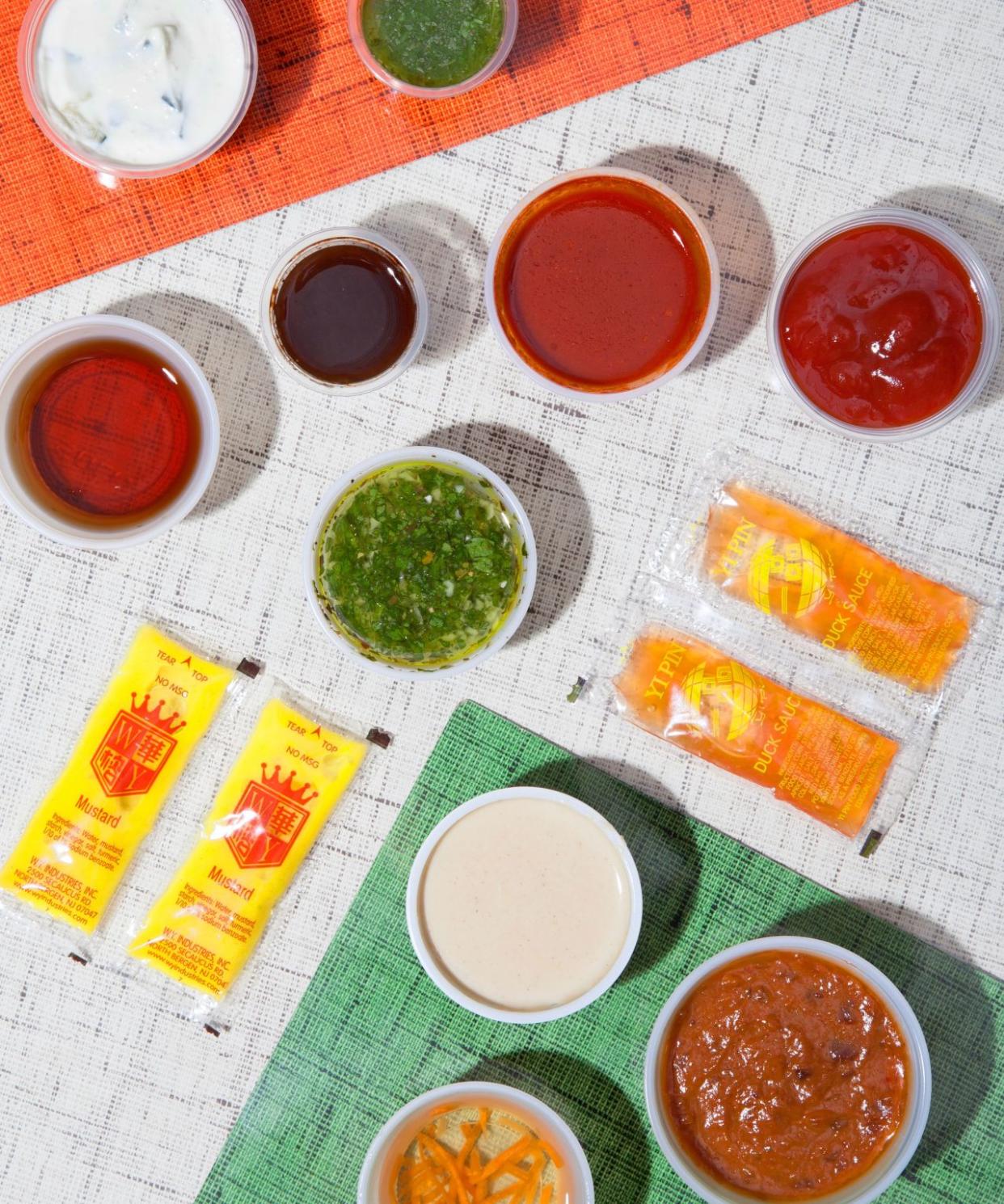
While we all aim to cook at home more, a busy work week can thwart the path to our highest of domestic goals. It’s hard not to give in to the convenience of delivery. After all, we’re only a few clicks away from hot meals delivered right to our doorsteps.
Related: What It’s Like To Feed A Family For Less Than $20 A Day
Our Seamless obsession is also the reason why our fridges and kitchen tables become stocked with inordinate amounts of takeout condiments — packets and plastic containers filled with all the different sauces of the world. Here’s a helpful guide for how to deal with your condiment cornucopia in good conscience — and make a couple of awesome, home-cooked meals while you’re at it.
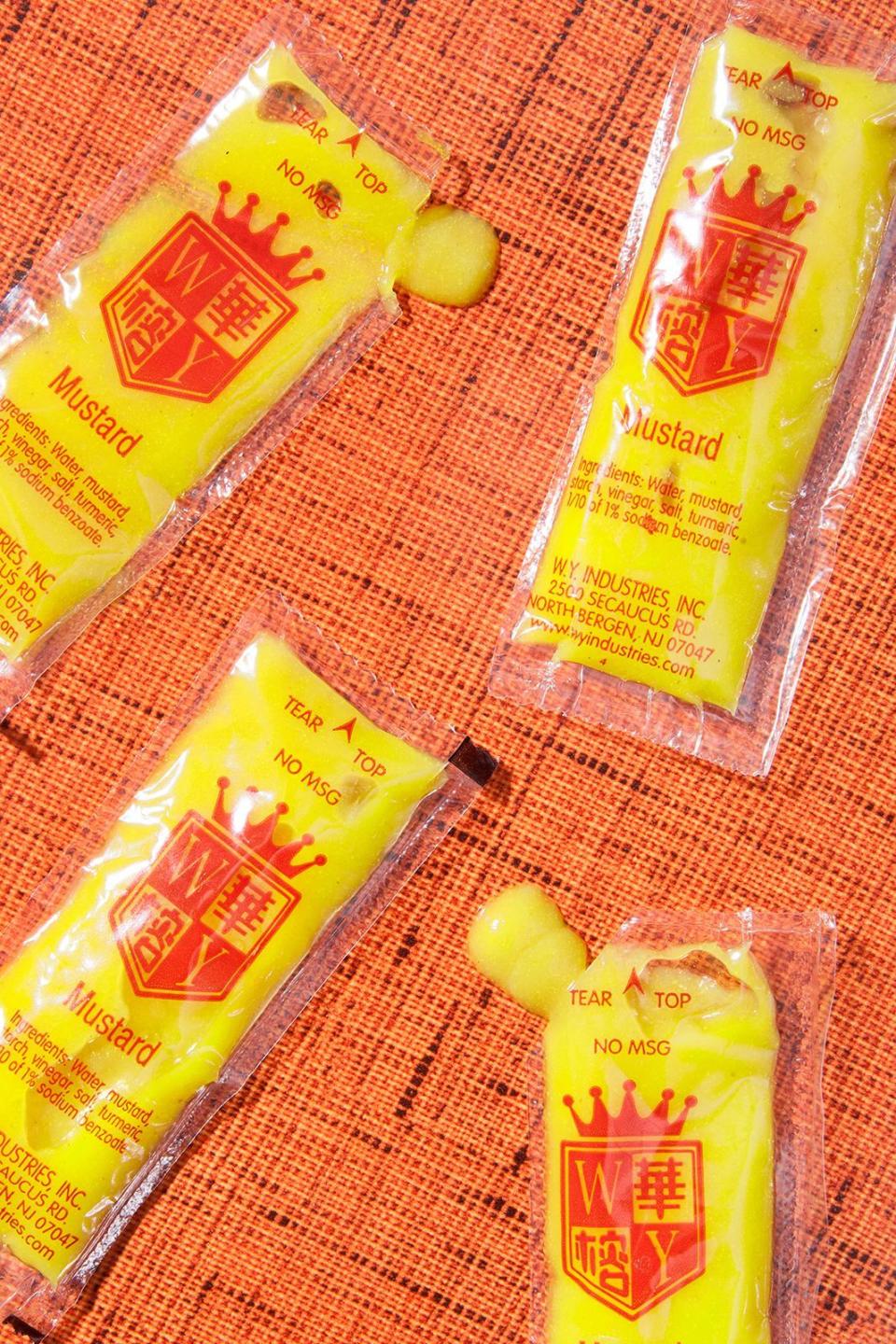
PHOTOGRAPHS BY RUBEN CHAMORRO.
Chinese Hot Mustard
What it is: Chinese mustard isn’t just an American-born phenomenon. Sure, the spicy and bright yellow sauce is a Chinese takeout staple. But mustard seeds, oil, and the plant itself are used in a variety of Chinese dishes. The fast food-friendly mustard we’ve come to love is a blend of brown mustard-seed powder, water, vinegar, and turmeric (which helps it achieve its vibrant yellow). What results is a tasty condiment that coats palates and clears sinuses.
The hack: Provided your Chinese fast food joint throws in a few extra packets, save them to gussy up your next batch of deviled eggs: Replace standard yellow mustard with Chinese mustard for some extra heat. Or, mix the mustard with canned tuna, chopped red onions, and gherkins for a spicy tuna salad.
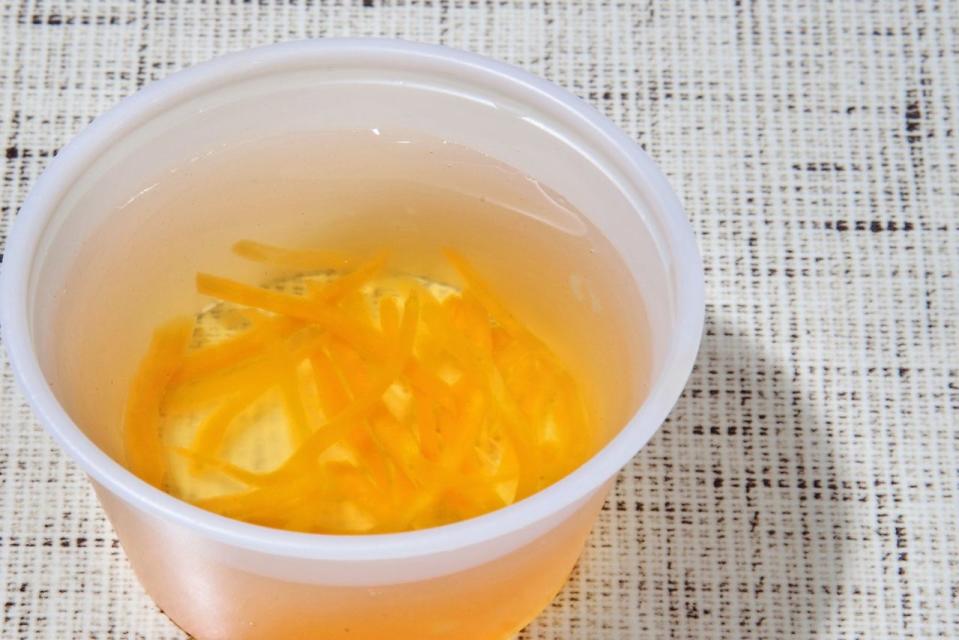
Nước Chấm
What it is: Nước chấm is the catch-all name for Vietnamese dipping sauces. But in restaurants, what’s often offered alongside noodles, rice dishes, grilled meats, and fried spring rolls is nước mắm pha, a humble, six-ingredient, fish-sauce-based condiment that gives everything it touches a transcendent umami flavor. But don’t be fooled by the simple pantry items used to make the sauce; it strikes a beautiful balance that is just sweet, sour, spicy, and salty enough.
Related: These Trader Joe’s Thanksgiving Hacks Will Change Your Life
The hack: Chances are, you won’t ever have leftover nước mắm pha. (It’s that delicious.) But if you do, it easily becomes dressing for a refreshing cucumber salad. Thinly slice cucumbers, toss with nước mắm pha, and sprinkle with crushed, roasted peanuts.
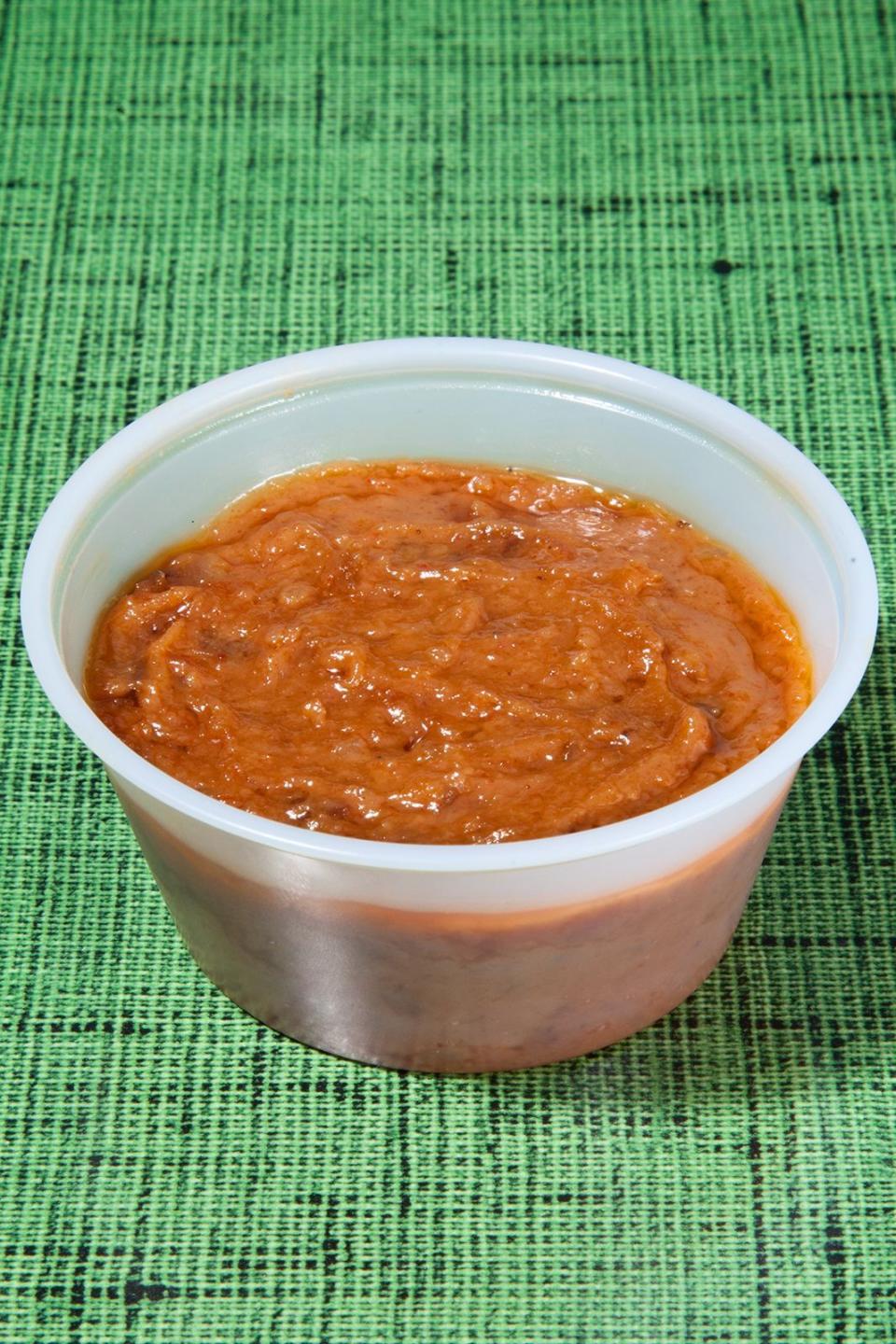
Peanut Dipping Sauce
What it is: Made of ground, roasted peanuts and flavored with coconut milk, soy sauce, tamarind paste, various spices, and more, this versatile dipping sauce is featured most often in Southeast Asian cooking but has become a takeout staple. Imagine a savory peanut butter that can be used for dipping fresh Vietnamese summer rolls or satay (grilled meat skewers). Peanut butter fanatics, now you get to have your peanut butter with every meal.
The hack: Turn leftover peanut sauce into a soul-satisfying noodle dish. Simply cook and drain rice noodles and toss with the sauce, shredded carrots, sliced cucumbers, and bean sprouts. Top with a fried egg or tofu for protein.

Mint Cilantro Chutney
What it is: In Hindi, chutney means “to lick,” and that’s exactly what you want to do with your plate after you’ve devoured your samosa. One of the most common versions is Hari chutney, a lip-smackingly delicious, vibrant-green sauce made from cilantro, mint, chili peppers, and coconut. It’s refreshing, a little spicy, and just the thing to brighten up the flavors of the Indian snacks and dishes it is often paired with.
Related: The Weirdest, Most Delicious Mac & Cheese Hacks You’ve Ever Seen
The hack: The next time you get a batch with your Indian takeout, don’t toss out the leftovers. This stuff lasts for a while in the fridge and can easily become a marinade for lamb kebabs. Simply mix the chutney with Greek yogurt and let your lamb chops sit in it overnight before cooking.
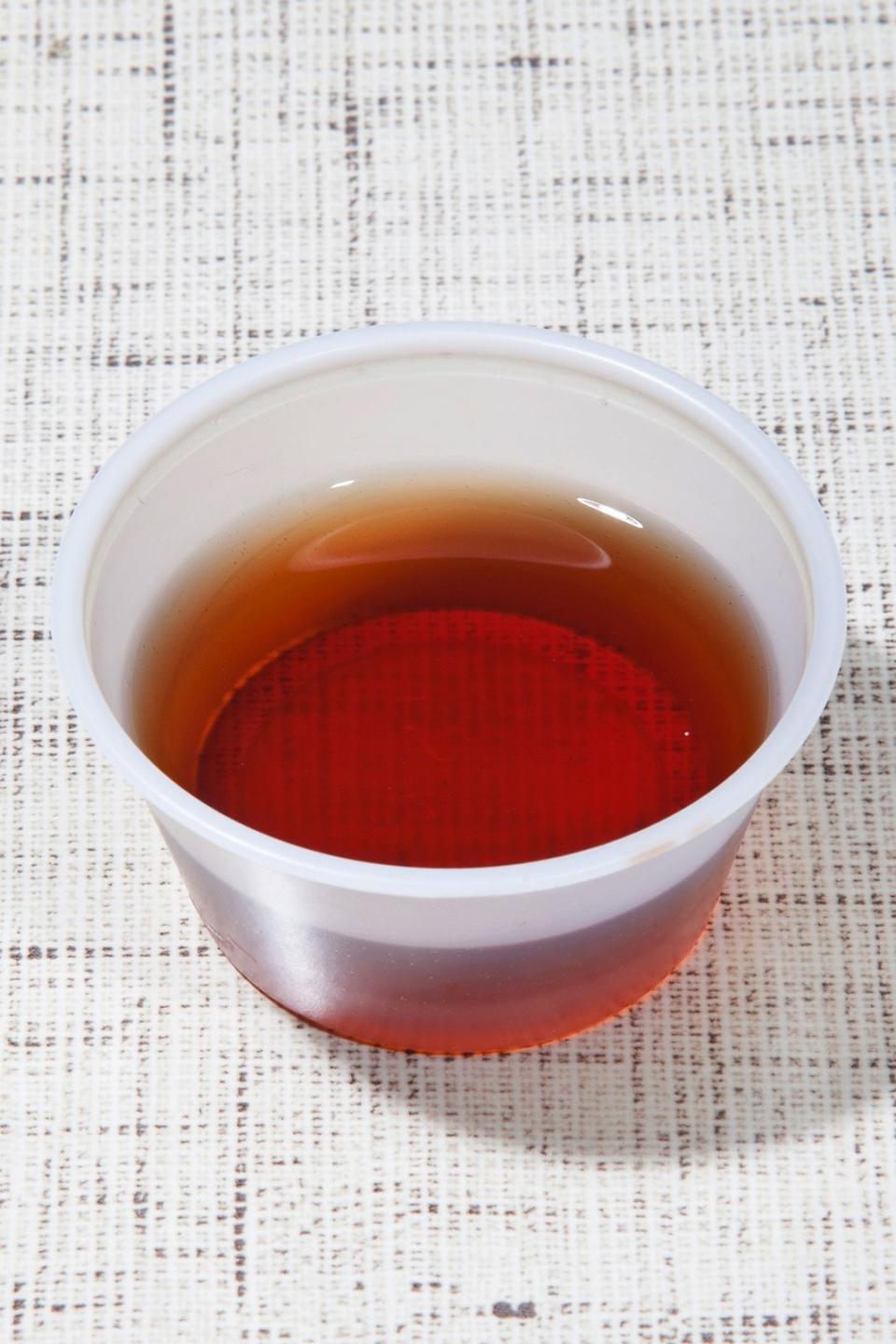
Malt Vinegar
What it is: At an English pub or a fish-and-chip shop, you’ll likely find fried fish and chips (fries) doused liberally in malt vinegar. This slightly pungent, light-brown condiment is delightfully tangy and perfect for greasy, fried foods. It’s made the same way beer is, except the fermentation of the malted barley is taken steps further until the alcohol turns into vinegar.
The hack: Try mixing a few spoonfuls of malt vinegar and Coleman’s mustard into potato salad. Or use the vinegar to pickle vegetables for your Bloody Mary: Blend together salt, vinegar, herbs of your choice, and garlic. Then, submerge vegetables (cucumbers, radishes, or carrots) in the brine.
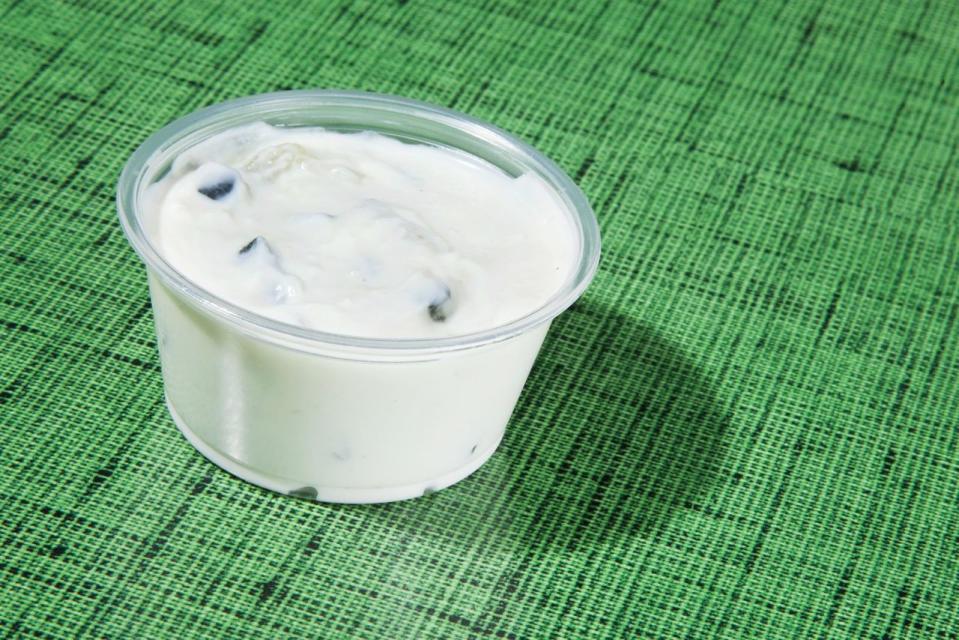
Tzatziki
What it is: Creamy, garlicky, refreshing, and tart, this Greek dipping sauce is delicious with pretty much anything. Tzatziki is often served in generous amounts with grilled meats, gyros, or as part of a mezze with plain pita. Though its ingredients are super simple (strained yogurt, cucumber, dill, olive oil, and some acid — usually from vinegar or lemon juice), it has a powerful flavor.
Related: The Best Trader Joe’s Products Of All Time
The hack: Not only is Tzatziki delicious; it’s healthy. Leftovers mean a convenient, ready-to-go dip for crudités. Or turn it into salad dressing by adding an additional tablespoon of olive oil, shaking it up, and tossing with greens.
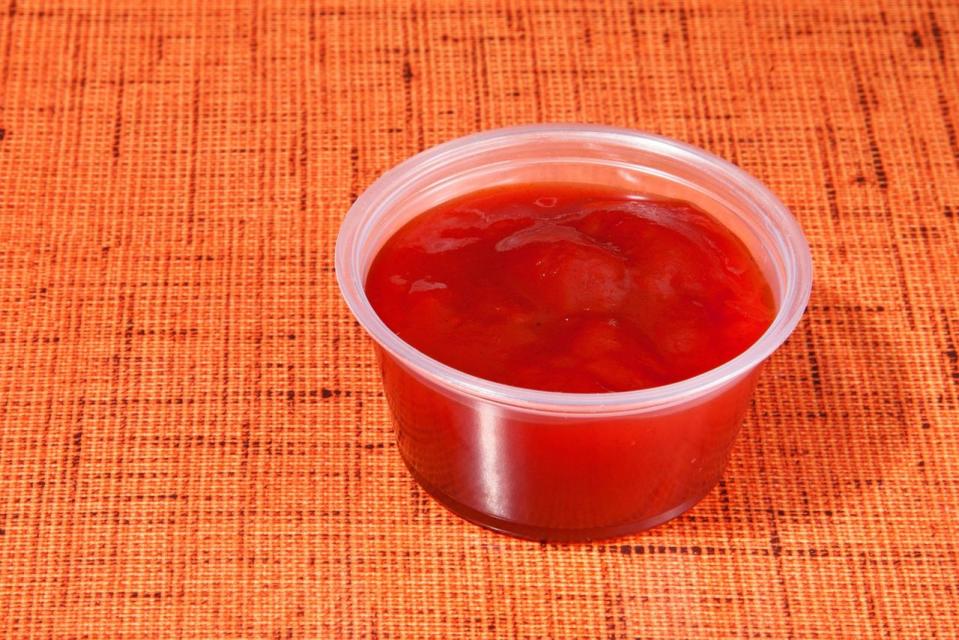
Banana Ketchup
What it is: Is ketchup still ketchup if it’s made with bananas instead of tomatoes? Apparently, yes. Banana ketchup, a popular condiment from the Philippines, is the Frankenstein of sauces and is perfect for dunking fries, burgers, hot dogs — basically everything. When a shortage of tomatoes in the Philippines during WWII threatened the ketchup supply, some serious innovative thinking to replace this mealtime essential took place. Bananas were deemed an appropriate substitute. With a little food coloring, this stuff tastes and looks almost like the ketchup we know.
The hack: While it’s traditionally mixed into dishes ranging from spaghetti to grilled meats, it’s also great on its own as a dipping sauce. Dredge raw, peeled shrimp in a coconut Panko mix and fry for perfectly crispy finger food, and serve the banana ketchup as a dip. Mix in hot sauce for some added burn.
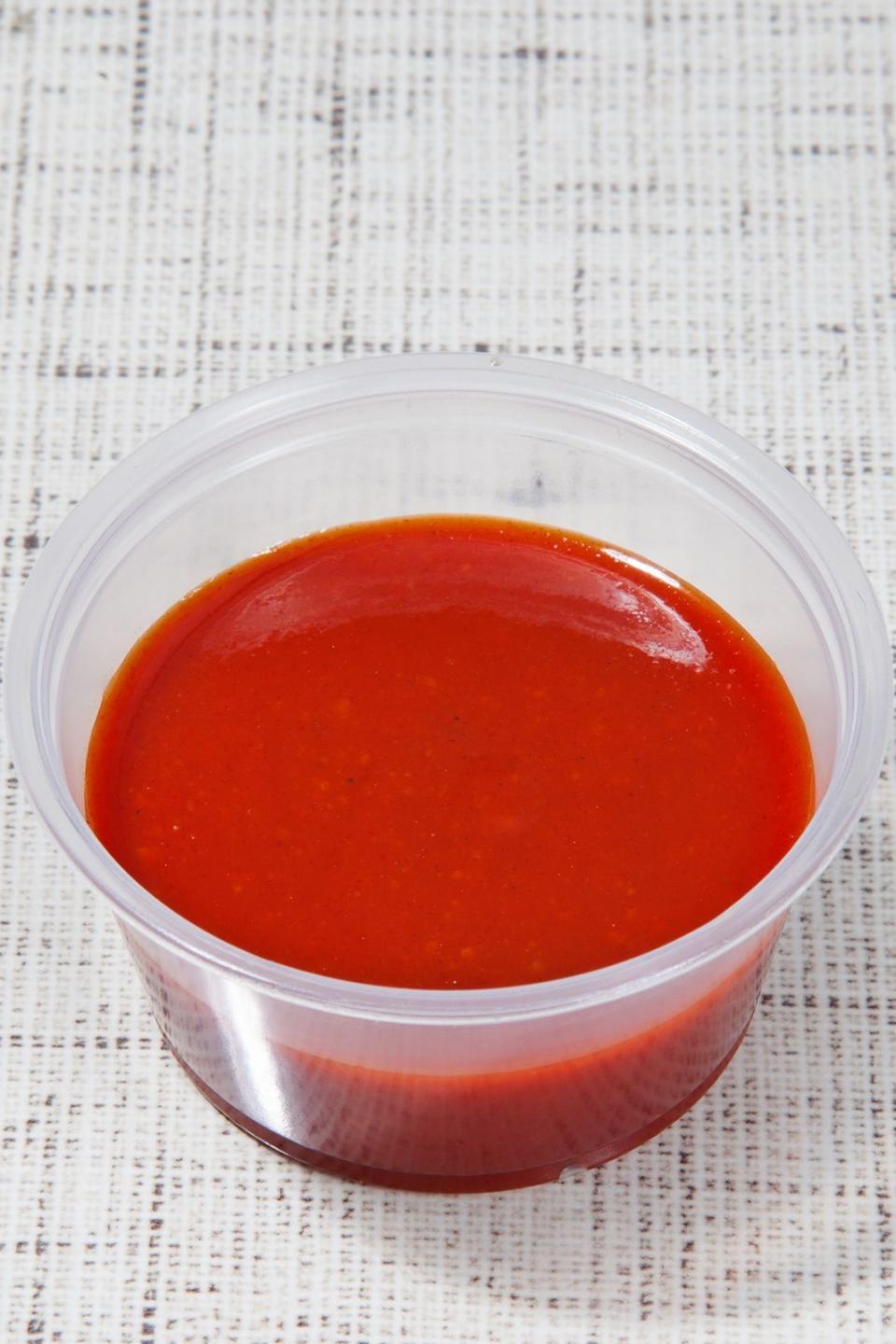
Gochujang
What it is: A mainstay of Korean cooking is Gochujang, a spicy and savory fermented sauce that adds a ton of pizzazz (and heat). But keep in mind that it can easily overpower dishes too. It’s traditionally made with red chili, soybeans, glutinous rice, and salt. Once the ingredients are blended to form a paste, the sauce is fermented outdoors in earthenware until the final product is piquant enough to be used. Gochujang adds the perfect amount of heat to stews, soups, marinated meats, andbibimbap — a delectable meat-and-veggie rice bowl.
Related: 11 Dinner-Making Tips Every 20-Something Should Know
The hack: You can easily give your meals a Korean slant with your leftover gochujang: Fill tortillas with gochujang-marinated meat, and top with diced kimchi and a gochujang-mayo blend for an extra kick.
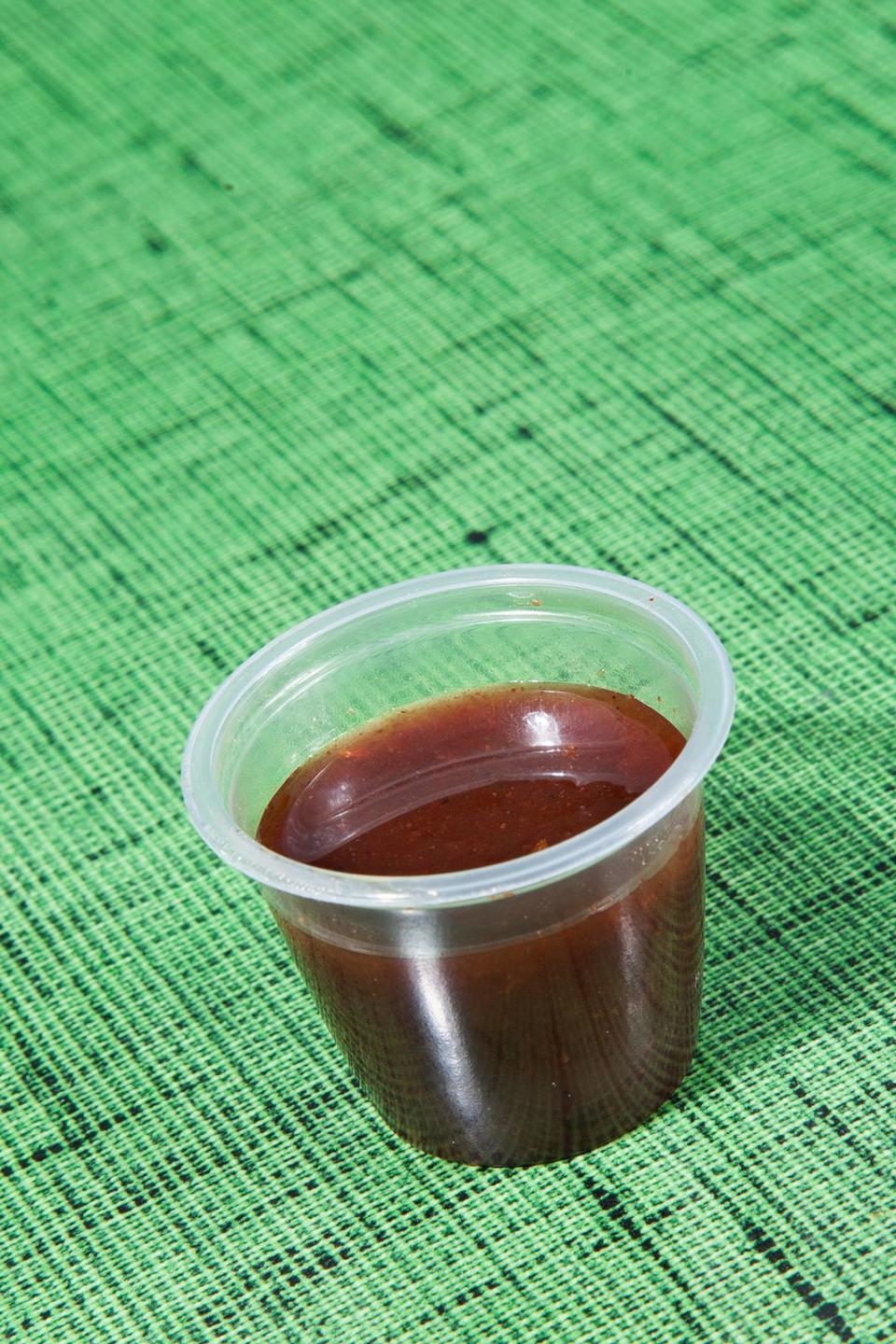
Tamarind Chutney
What it is: Another deeply rich and versatile condiment served with your Indian takeout is the tamarind chutney, a viscous counterpart to mint-cilantro chutney. Flavor-wise, it offers an interesting contrast to the green stuff. The main ingredient is the pulp of tamarind, a pod-like fruit cultivated in tropical regions around the world. This tangy and sugary sauce packs a mighty punch, so a little goes a long way.
The hack: Not feeling like Indian food two days in a row, but wanting make use of your leftover tamarind chutney? Turn it into a base for a simple noodle stir fry. In a pan, simply sautée a vegetable medley of your choosing, plus tofu. Add cooked rice noodles and the chutney. Cook until the sauce is thoroughly mixed in.
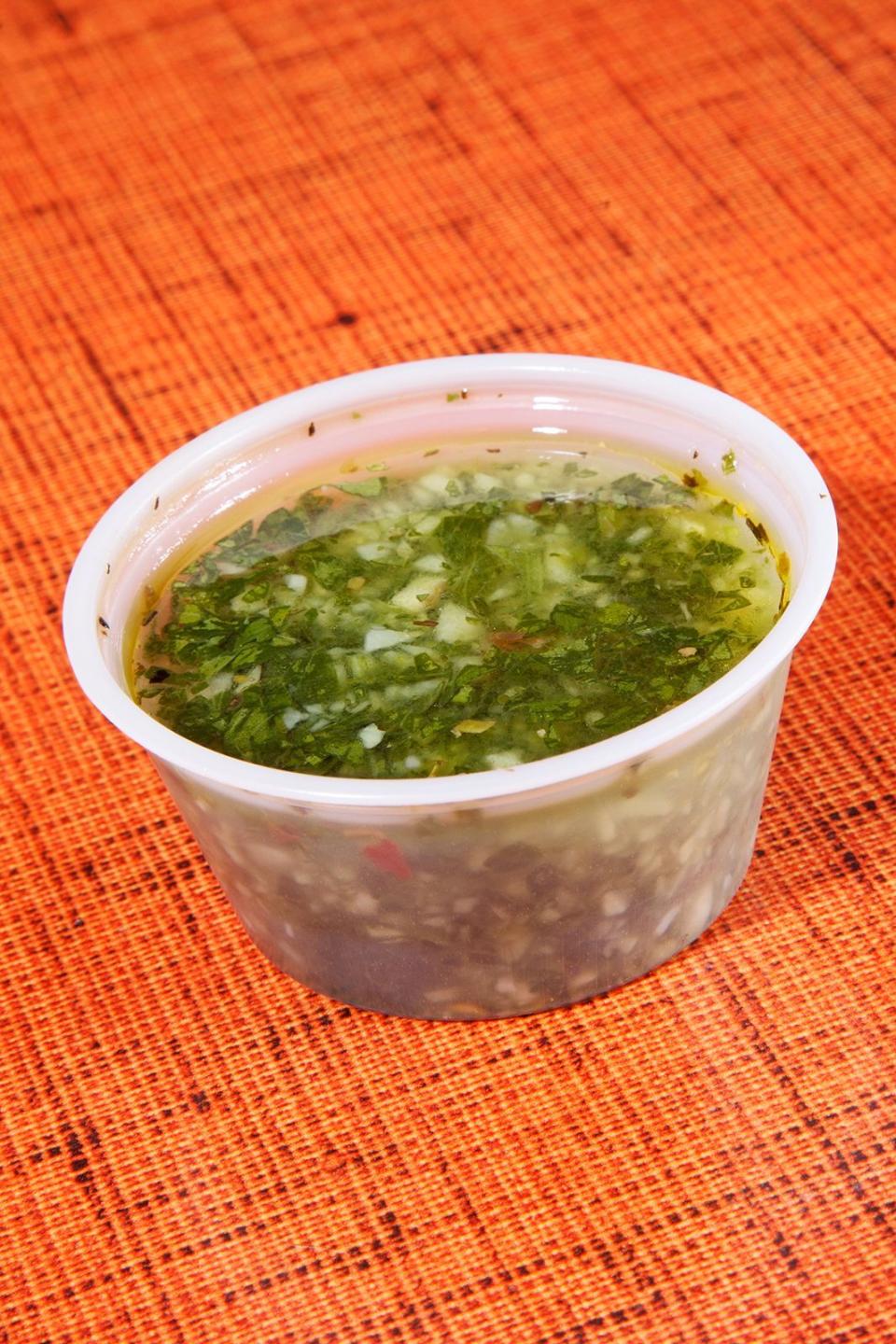
Chimichurri
What it is: Chimichurri is Argentina’s answer to American ketchup, except it’s green in appearance and the go-to condiment for grilled meats. This herbaceous sauce is a bold blend: a vinaigrette-like mixture of white vinegar, olive oil, and a hearty melange of parsley, garlic, and various green herbs. The word “chimichurri” dates back to the 19th century, when Basque settlers, upon arriving in Argentina, started calling the sauce tximitxurri, which means “a mixture of things in no particular order.”
Related: 8 Delicious Hot Chocolates You Must Make This Winter
The hack: While it goes fabulously with grilled flank steak, it also gives meatless options a major flavor upgrade. Use it to dress roasted sweet potatoes, or atop warm pita with grilled halloumi and tomatoes for some Latin-Mediterranean fusion.

Chinese Duck Sauce
What it is: This cloying, gooey condiment is an American invention that has become synonymous with Chinese takeout — but only on the east coast. The west coast has yet to embrace this bizarrely addictive egg-roll dipping sauce. Sources say that upon arriving in the United States, Chinese immigrants who opened restaurants tried to recreate a traditional sauce, hoisin, served primarily with Peking duck, hence the name “duck sauce.” These early chefs had to improvise with what was available locally, such as applesauce and molasses. And though the sauce’s authenticity is debateable, one thing’s for sure: It’s yummy, and it’s here to stay.
The hack: Despite its name, duck sauce can be a great marinade for barbecue with an Asian slant. Mix three packets with three tablespoons of soy sauce or Tamari, two cloves of garlic, and a drizzle of sesame oil, and marinate an 8-oz flank steak, pork loin, or chicken breast in it overnight.
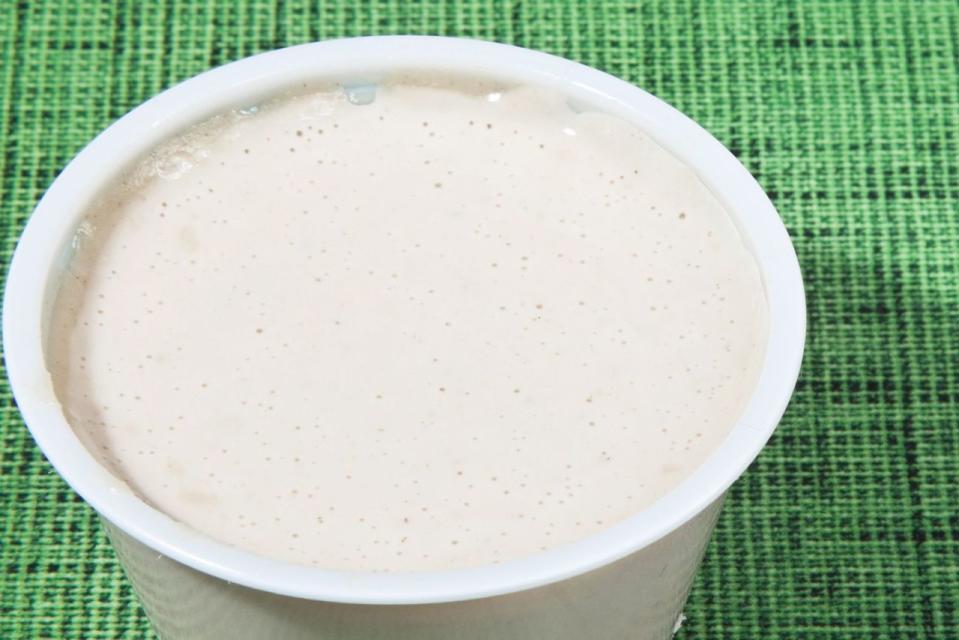
Tahini
What it is: If you’ve ever had hummus or baba ghanoush, you have had tahini. If you’ve ever devoured a falafel sandwich, then you’ve definitely had tahini — mixed with yogurt for a heavenly sauce. Tahini is a rich paste made from hulled sesame seeds that’s used all throughout North Africa, Greece, Eurasia, and the Middle East. It adds incredible richness, especially to meatless dishes.
The hack: If, for whatever crazy reason, you have leftover tahini sauce from your late-night falafel run, simply turn it into a protein-rich salad dressing. Add lemon juice and season with salt and pepper. Thin it out with water if necessary, and toss it with romaine, chickpeas, tomatoes, and red onion. Or give your peanut butter cookies a makeover by substituting the peanut butter with tahini.
By Diane Chang
Related: 14 Scary-Sounding Food Words & What They REALLY Mean

